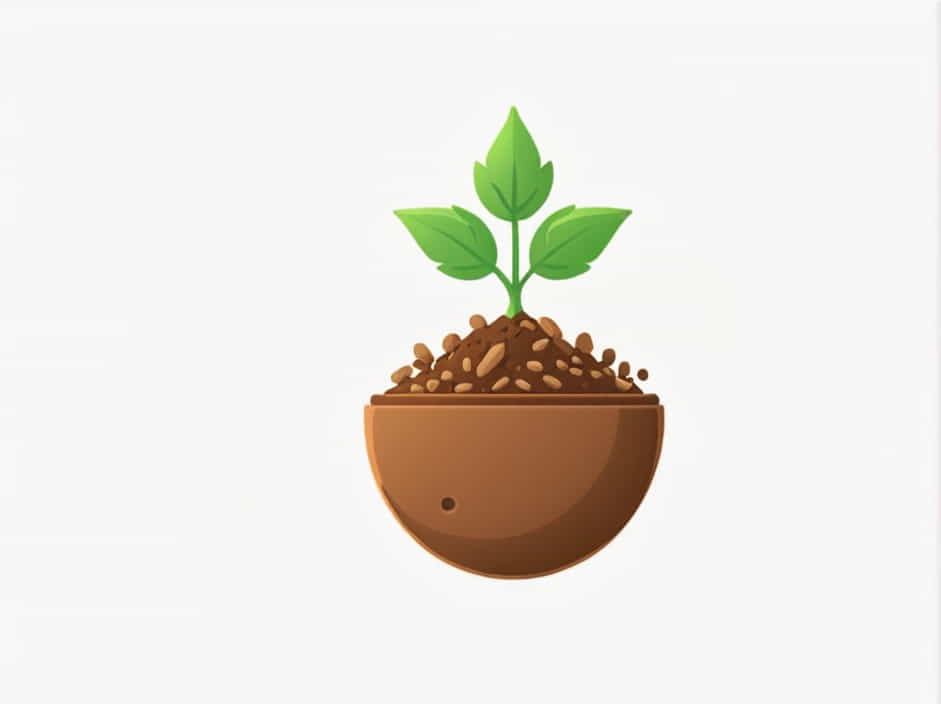Soil is one of the most essential components of Earth’s ecosystem, providing nutrients for plants, supporting life, and influencing water retention. It is composed of multiple layers, each with distinct characteristics. One of the most important layers is the subsoil, scientifically known as the B horizon.
Understanding the subsoil is crucial for agriculture, construction, and environmental conservation. This topic explores the properties, composition, and significance of subsoil, as well as its impact on plant growth and soil health.
What Is Subsoil?
Definition of Subsoil
The subsoil, also called the B horizon, is the layer of soil located beneath the topsoil (A horizon) and above the parent material (C horizon). Unlike the topsoil, which is rich in organic matter, the subsoil primarily contains minerals, clay, and some decomposed organic material.
Characteristics of Subsoil
-
Lower Organic Content
- The subsoil contains less humus and organic matter than the topsoil. This makes it less fertile but still important for plant roots.
-
High Mineral Concentration
- This layer is enriched with minerals like iron, aluminum, and calcium, which leach down from the topsoil through a process called illuviation.
-
Denser and Compact Structure
- The subsoil is more compact and less porous, which affects water movement and root penetration.
-
Retains More Moisture
- Due to its high clay content, subsoil can retain more water than topsoil, which is beneficial in dry conditions.
The Layers of Soil: Understanding the Soil Horizons
Soil is divided into different layers, known as horizons, each playing a specific role in soil formation and plant growth. The main soil horizons are:
1. O Horizon (Organic Layer)
-
Found in forests and grasslands.
-
Composed of decaying leaves, plant material, and organic matter.
-
This layer nourishes the topsoil.
2. A Horizon (Topsoil)
-
Also called topsoil, it is the most fertile layer.
-
Contains humus, microorganisms, and essential nutrients.
-
Supports plant roots and agricultural activities.
3. B Horizon (Subsoil)
-
Located beneath the topsoil, this is the subsoil layer.
-
Rich in leached minerals and clay ptopics.
-
Less fertile but important for plant roots and water retention.
4. C Horizon (Parent Material)
-
Made of partially broken-down rocks and minerals.
-
Provides raw material for soil formation.
-
Contains very little organic matter.
5. R Horizon (Bedrock)
-
The deepest soil layer, consisting of solid rock.
-
Over time, weathering breaks it down to form new soil.
Composition of Subsoil
The B horizon is composed mainly of:
-
Clay – Helps retain moisture but can limit drainage.
-
Iron Oxides – Give the subsoil a reddish or yellowish color.
-
Leached Minerals – Includes calcium, aluminum, and magnesium.
-
Silicates – Essential for soil structure.
-
Limited Organic Matter – Some decomposed roots and microorganisms.
Functions and Importance of Subsoil
1. Supports Plant Growth
-
Though not as fertile as topsoil, subsoil provides anchorage and water for plant roots.
-
Deep-rooted plants, like trees and shrubs, depend on subsoil minerals.
2. Water Retention and Drainage
-
Subsoil holds moisture better than topsoil due to its high clay content.
-
Acts as a natural reservoir for plants during dry periods.
3. Mineral Storage
-
Many essential minerals are stored in the subsoil after leaching from the topsoil.
-
Plants with deep roots can absorb these nutrients.
4. Foundation for Construction
- Subsoil’s compact structure makes it important for building foundations and roads.
Differences Between Topsoil and Subsoil
| Feature | Topsoil (A Horizon) | Subsoil (B Horizon) |
|---|---|---|
| Location | Uppermost soil layer | Below the topsoil |
| Organic Matter | High | Low |
| Nutrient Availability | Rich in humus and nutrients | Contains minerals from leaching |
| Texture | Looser and more porous | Denser and compact |
| Water Retention | Drains well | Holds more water |
| Plant Growth Support | Ideal for crops and plants | Supports deeper roots |
How Subsoil Affects Agriculture
Farmers and soil scientists consider subsoil properties when choosing crops and farming techniques. Here’s how subsoil influences agriculture:
1. Fertility and Crop Growth
- Subsoil is less fertile than topsoil, but deep-rooted crops (such as wheat, trees, and grapevines) can benefit from its minerals.
2. Drainage and Irrigation
-
Clay-heavy subsoil can cause poor drainage, leading to waterlogging.
-
Sandy subsoil drains too quickly, requiring more irrigation.
3. Soil Management Strategies
-
Plowing and deep tilling help improve root access to subsoil nutrients.
-
Adding organic matter can enhance soil structure and fertility.
Can Subsoil Be Improved for Farming?
Yes! Farmers and soil conservationists use several methods to enhance subsoil quality:
1. Adding Organic Matter
- Mixing compost or manure into subsoil improves fertility and water retention.
2. Using Cover Crops
- Cover crops like clover and alfalfa help break up compact subsoil and add nutrients.
3. Soil Aeration
- Deep plowing and aeration techniques reduce soil compaction, making it easier for roots to penetrate.
4. Correcting pH Levels
- Lime is added to reduce soil acidity and make minerals more accessible to plants.
Subsoil and Environmental Impact
Subsoil plays a key role in soil conservation and ecosystem health.
1. Prevents Soil Erosion
- Subsoil anchors topsoil, reducing the risk of erosion from wind and water.
2. Supports Underground Water Storage
- It acts as a natural filter, cleaning water as it moves through soil layers.
3. Stores Carbon
- Some subsoils store carbon, helping reduce greenhouse gases in the atmosphere.
The subsoil (B horizon) is a critical part of the Earth’s soil structure. Although it lacks the organic richness of topsoil, it serves essential functions in water retention, mineral storage, plant support, and environmental stability. Understanding subsoil properties helps farmers, engineers, and conservationists manage land resources effectively.
By improving subsoil quality, we can enhance agriculture, prevent soil erosion, and support sustainable land use, ensuring healthy soil for future generations.
